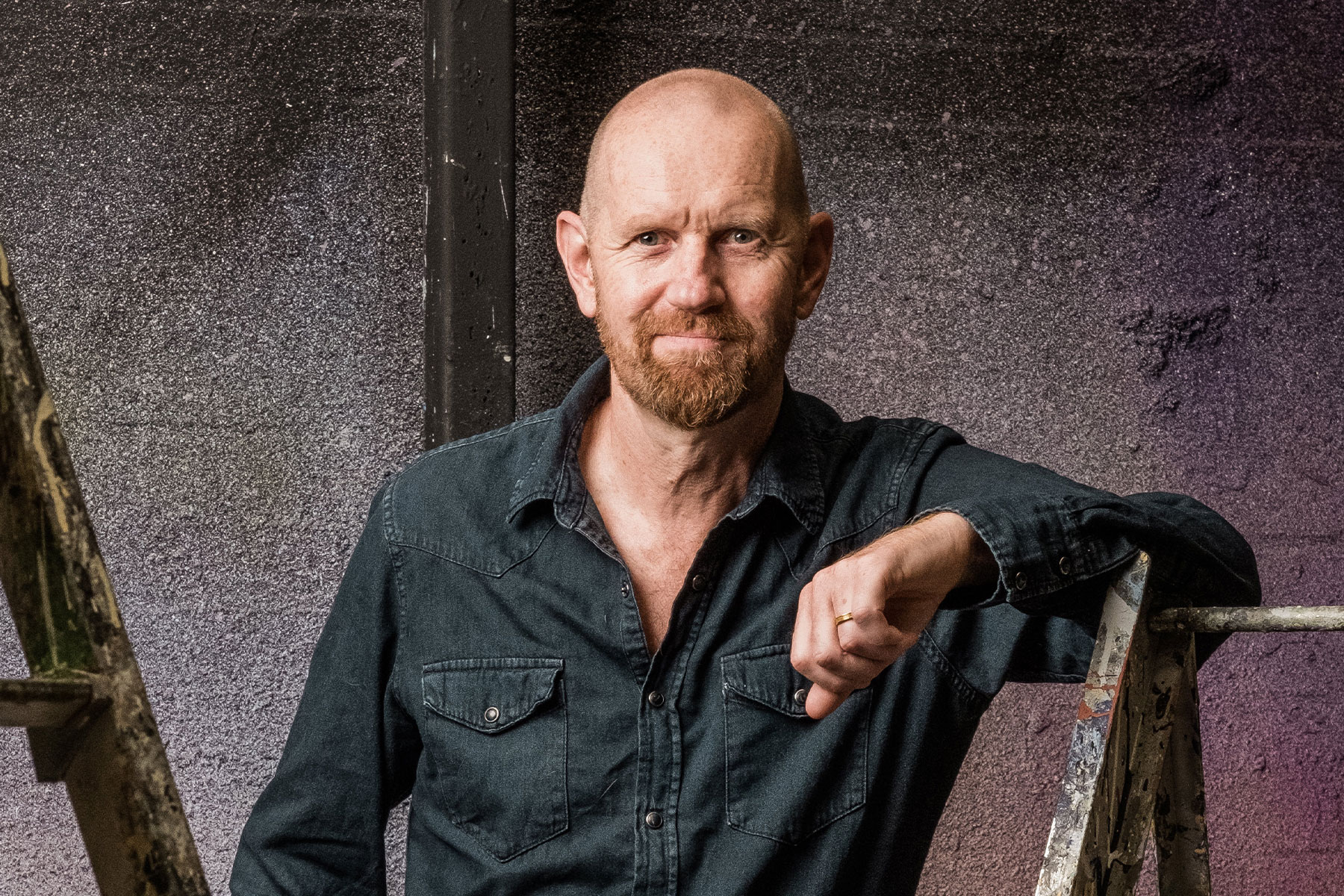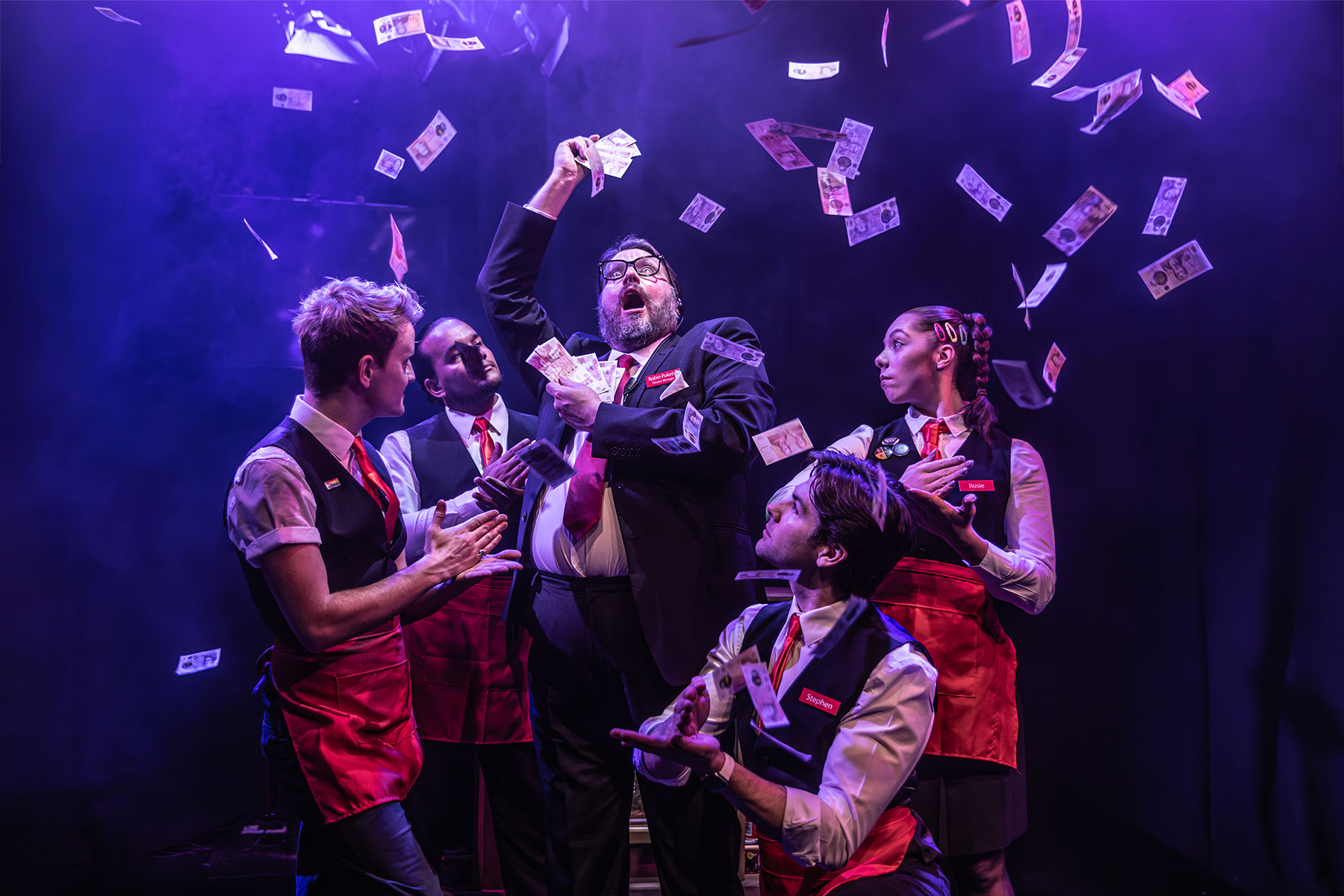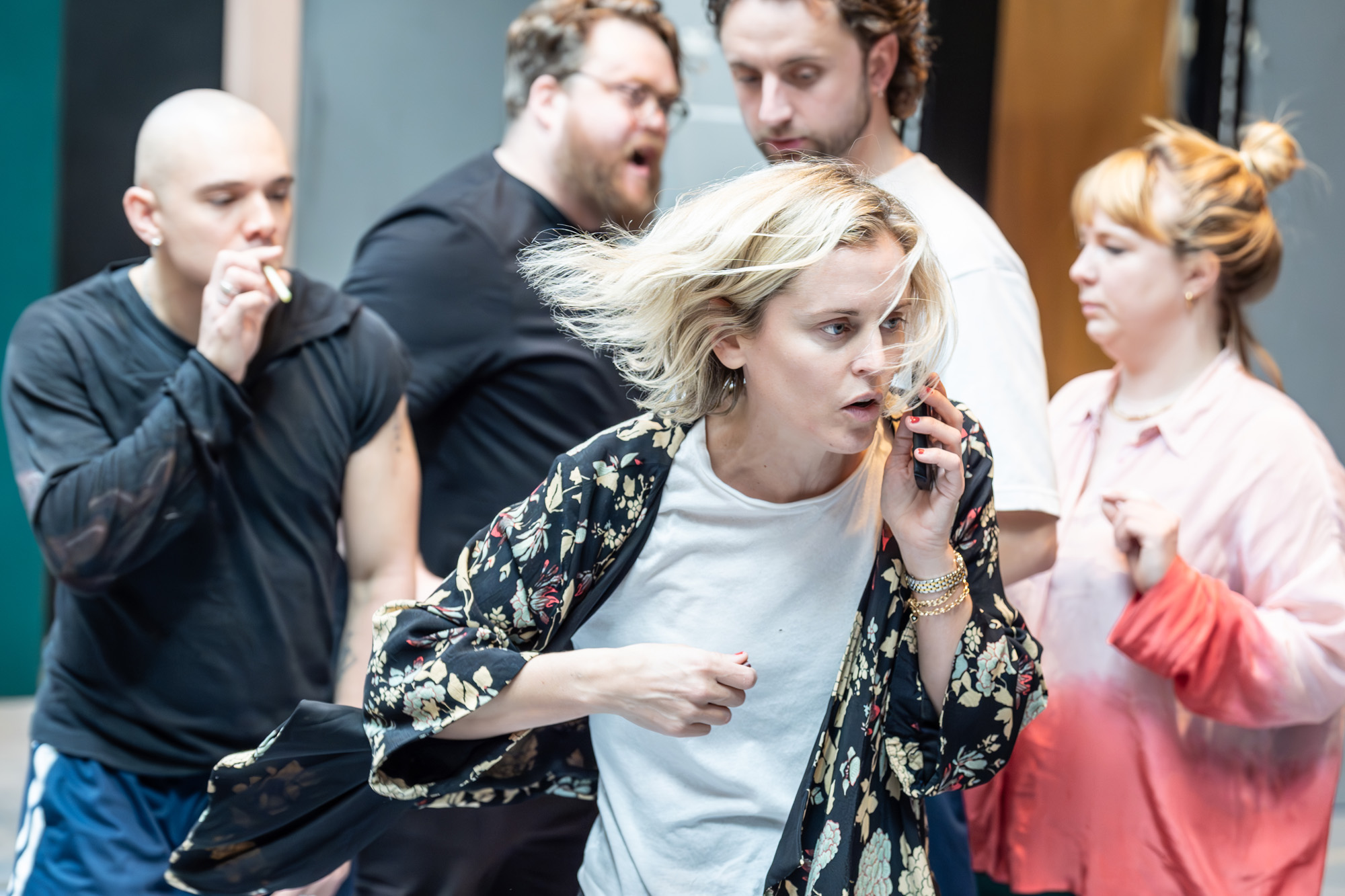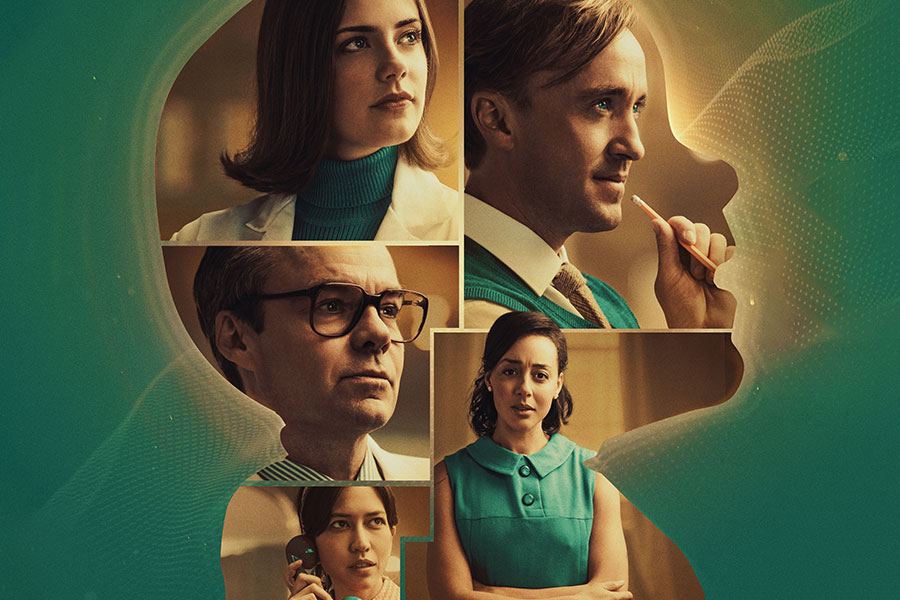Brief Encounter With … Where’s My Seat‘s Tamara Harvey
As part of the Bush Theatre’s Where’s My Seat? project, celebrating the transformation of the theatre’s new space from library to performance venue, Tamara Harvey has directed three short plays in three different stage configurations.
Playwrights Deirdre Kinahan, Jack Thorne and Tom Wells were also given stage directions to include by experts in each of the configurations; former artistic director of the in-the-round Stephen Joseph Theatre in Scarborough Alan Ayckbourn; outgoing artistic director of the thrust Donmar Warehouse, Michael Grandage; and the Bush Theatre’s own outgoing artistic director, Josie Rourke who wrote for end-on.
Harvey, now a Bush associate, returns to the theatre having previously directed Resilience and tHe dYsFUnCKshOnalZ!. Her West End directing credits include Plague Over England, One Flew Over The Cuckoo’s Nest and Whipping It Up, for which was nominated for an Olivier.
Harvey directs Francesca Annis, Debbie Chazen, Richard Cordery, Hugo Speer, Hugh Skinner and Nina Sosanya across the three plays.
The show, which opened on 23 June 2011 (previews from 15 June) runs until 2 July 2011 as part of the Bush’s 32 Degrees West Season – named for the angle between the front door of the company’s previous home and its new one.
How did you begin to approach such a unique project and what were your first thoughts about it?
Our first task was getting props from the National Theatre. We got nine altogether including: a giant strawberry, a coal scuttle, a nodding dog, two dead hares, two stuffed rabbits, a glass cabinet, a necklace of fingers, a basketball and a blue plane.
We knew we wanted to use three different forms of staging; thrust, in-the-round and end-on, so in order to do this, we consulted three experts to write six stage directions each; Alan Ayckbourn, Josie Rourke and Michael Grandage.
We then asked three Bush Theatre playwrights to write for us, so Deidre Kinahan; Jack Thorne whose play When You Cure Me was at the Bush; and Tom Wells who is one of our commissioned playwrights, and challenged them to each write a 20 minute play using the props and navigating the stage directions. We then cast six actors across the three plays.
How did the actors respond to this alternative approach?
They’re great, they’re a wonderful mix of ages and experience and that was part of what we were aiming to do at the beginning.
We said to our playwrights, “you’ll have six actors” and gave a rough idea of age brackets. Then it was a question of casting people who were not only talented, but also very physically involved in the project. Actors who are prepared to be very physical, because it’s a two-week rehearsal period and three projects and three different configurations, which not all actors can do – particularly in-the-round.
So it was as much about knowing the cast would be a group of people willing to dive in as a about the plays themselves. We were very fortunate in that we ended up with very young talented actors who also get exactly what we are trying to do.
Did each turn out how you expected and which is your favourite of the three?
They were all a complete surprise. The extraordinary thing is that, they’re all dramatically different plays so we’ve got a combination of farce, comedy and two interlocking monologues that are quite dark and very tragic.
The difference between the stage directions and actual plays were also vastly different. For example, Michael Grandage‘s stage directions seemed, when you read it, to invite the epic, but were brilliantly undercut within the scriptwriting. Similarly, with Alan Aykbourn, in the opening scene, I was convinced how it might be, but it was completely different when the first draft was delivered it was a real case of walking through the wardrobe and finding a Narnia I never expected.
As for my favourite, that’s a difficult question because I love them all, they’re just different. Actually, the great thing is, each time I’m rehearsing each one of them, I decide that’s my favourite and then half an hour later I’m saying the exact same thing about the other one. They all have moments of humour and tragedy so I’m not even answering that one; you’ll have to come and decide for yourself!
The project itself seems quite restrictive. Was this something you struggled with?
I suppose you would have to ask the playwrights if it was restrictive to manage to tell a whole story within such a short space of time in quite different ways. It’s the same with any piece of theatre, though; you have to see a moment or a fraction of a life revealed on stage, which is difficult to do.
There were also obviously restrictions with using props. When Alan Aykbourn and I were talking about the stage directions he said: “Well I just write, I don’t think about writing for the round.” So I said, “is there anything that doesn’t work in the round?” And he said, “I never managed to get a double decker bus to work!”
However, one of the things that has been a problem for me is constantly having to reconfigure my mind with staging; I’m literally moving around the rehearsal space making sure everything is in its proper position then getting to the end wishing it would stay there for the afternoon!
It does have its advantages. The room above the pub can be anything you want it to and its something that everyone here is very keen to continue and it’s a bigger space that we’re in now so the capacity is bigger and just different dimensions but its seems to be a world of opportunity rather than a restriction to anyone with layout.
How much creative input did the project require from yourself and other influences?
It is very important for the playwright to be as involved on stage as the creative team and one of the great things about working with a designer, is that they will bring great things and new ideas.
For example, in the last play that I did at the Bush, The Contingency Plan, the designer had a big part in it. It was set around a large table and just that one setting and done in the round.
My first reaction was “God I don’t know how that could work, the people are sitting at a table, how do I do that?”. In the end it was absolutely perfect.
Of course, when you first read a play, you start to picture it in your mind and then when you start those conversations with the designer, it is possible to explain those pictures.
How do you visualise the future of the theatre and its impact on the community and how are you intending to go about this?
Well we’re just at the very beginning in this building. It is a library, which feels very important due to history; its always been a space that has been open to anyone and everyone who wants to come in and engage with words.
We’re shifting that focus with spoken words; what it offers to Bush is the chance to spread out a bit so in the first instance, literally using the theatre, and secondly, metaphorically its position in Shepherd’s Bush. We will now have a bar/café there and an opportunity to engage with the community on a much greater level and our door is open all day.
Half of the project is about the building itself; it’s our chance to figure out a way it can and might work, and also our chance to ask the audience about that. So before the play starts and in between the two intervals, the audience will have a chance to go further into the building.
Then they will also have the chance to go backstage into our rehearsal room, so they really have the chance to explore, and we’ll be asking them all sorts of things. Standard questions like “how did you find the theatre?” but also, “what font do you think our toilet signs should be in?” All things we can draw out of them. We want the development of this building to become a dialogue, rather than being pushed to the side then thrust forward.
The important thing about this project is that it’s about exploration and the beginning of the conversation about what this building might be. I suppose at this stage we’re saying we don’t have the answers but we have got some of the questions.
Where’s My Seat? opened at the newly located Bush Theatre on 23 June 2011 (previews from 15 June) where it continues until 2 July 2011.










